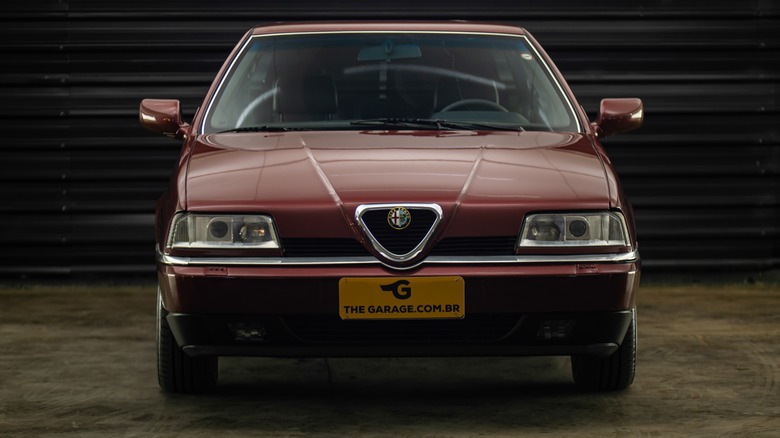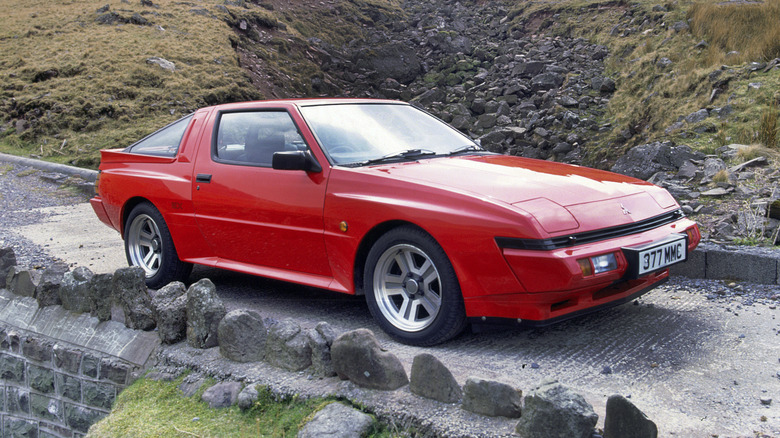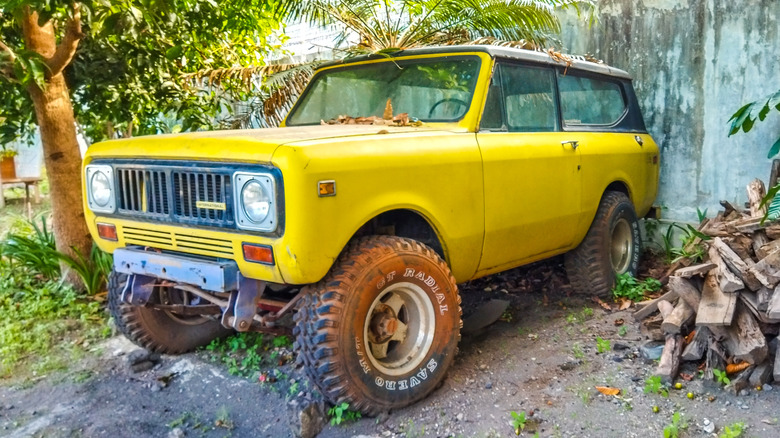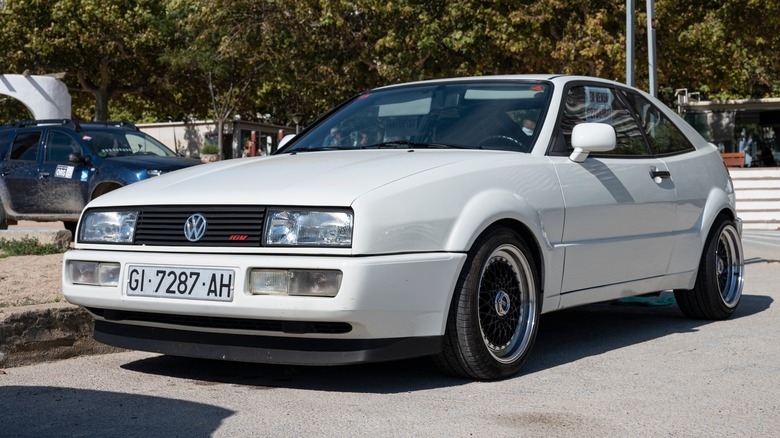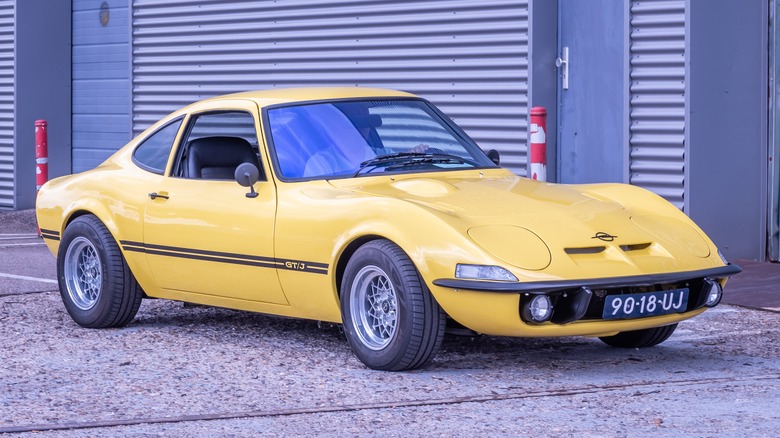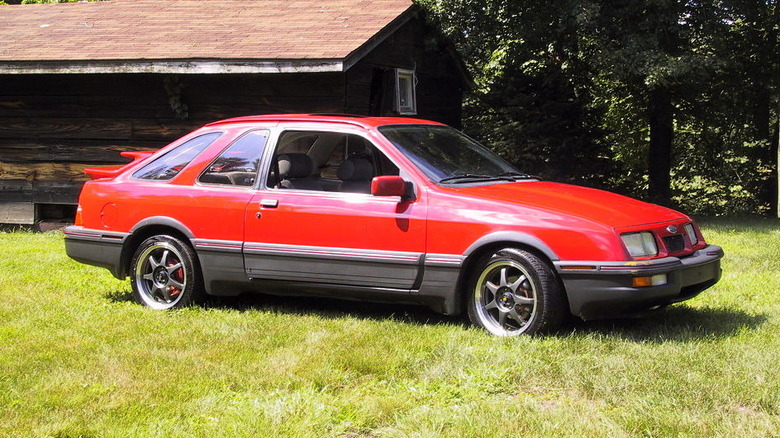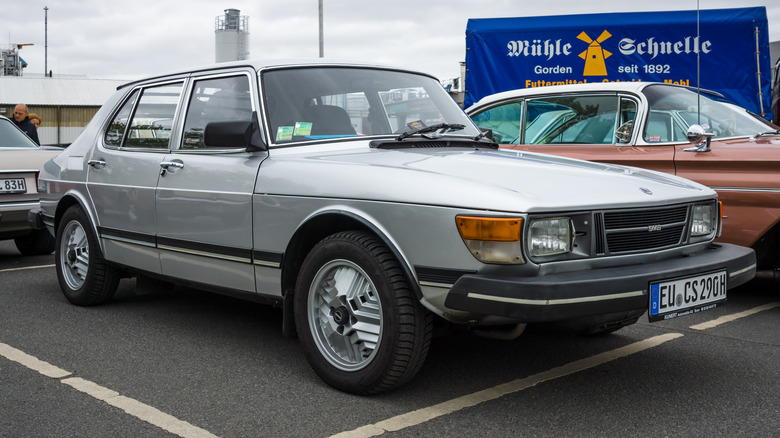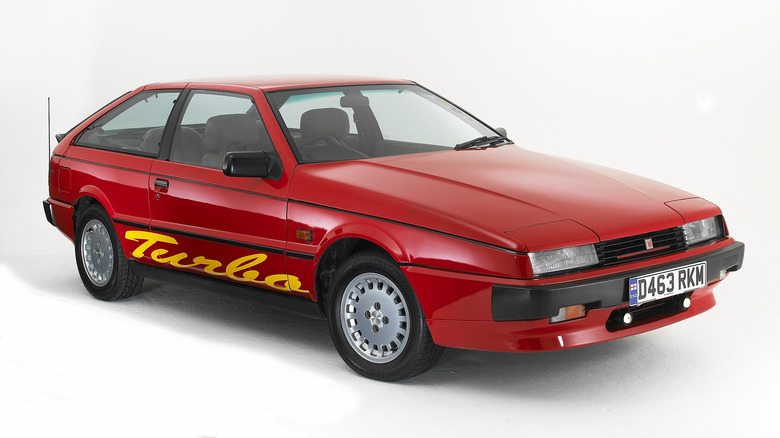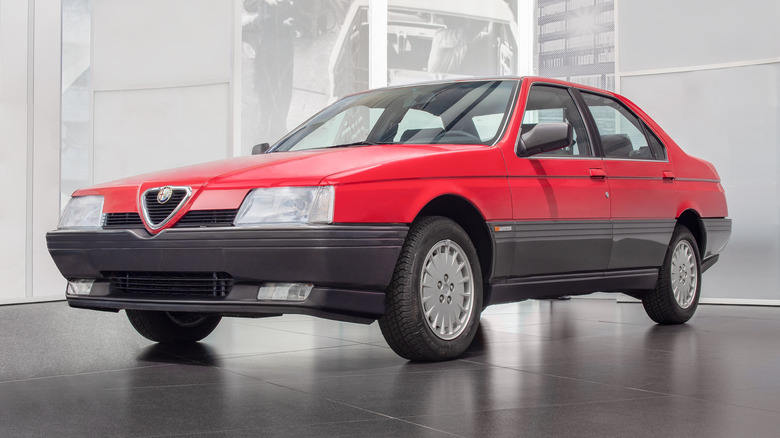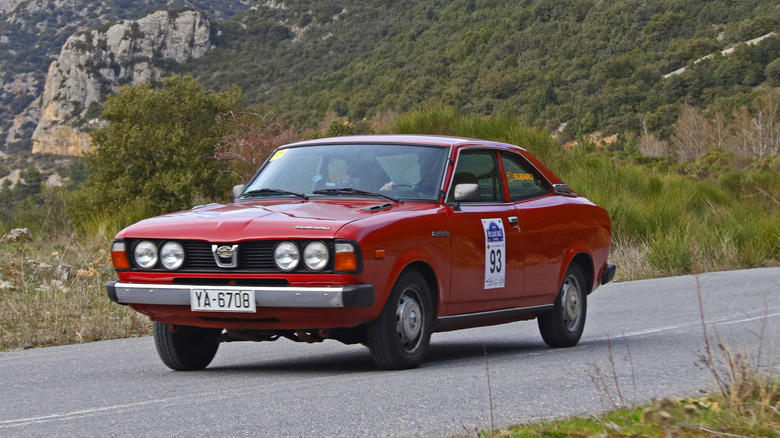Old Cars That Are Almost Extinct
There comes a point when old cars clear the roads and get replaced with modern ones. For most of them, this is of no consequence. Nobody laments the depletion of used 1983 Chevy Citations. Furthermore, certain rare cars like a Ferrari 250 GTO or Bugatti Atlantic are in a special category of vehicles that are so rare and so unique, they qualify to be museum pieces and will always be preserved. The aging cars that started out as average vehicles meant for either spirited driving on regular roads or hauling families to the movies do not usually get special efforts of preservation. At least, not until a fair amount of time passes, and that once-mundane automobile becomes interesting.
The world is full of these types of cars. And it can be hard to know what current models will become desirable in the future. Average passenger cars such as early '60s Impalas, once ubiquitous on American highways, now command hefty price tags and are wanted for customization by hotrodders and lowriders. Some of these average cars were produced by smaller companies, such as AMC, and by virtue of coming from a low-volume manufacturer, are increasingly hard to find in restorable or drivable condition. These are the kinds of cars in danger of extinction. They may have started life as moderately popular commuter cars, but fell out of favor and were then left to languish until rusting away or sold for scrap. Before any more are lost to history, here is a look at some old cars that are almost extinct.
Mitsubishi Starion/Chrysler Conquest
The Diamond Star Motors import is one of the coolest cars to come from Japan in the '80s. With great looks and a moderately powerful 4-cylinder, especially from the turbo model, the Starion/Conquest was a great car that fared poorly in the world of Camaros and Mustangs. The Starion is a three-door sports coupe made in Japan from 1982-1989 and was rebadged as a Chrysler Conquest in North America. It was built to compete with other Japanese sports cars at the time, such as the Toyota Supra, Nissan Z, and Mazda RX-7, but also as an affordable Porsche 944 alternative. These cars are attractive and offer reasonably good performance from their 2.6-liter, 4-cylinder turbocharged engines that produce from 150-197 horsepower depending on year model (via Motorpedia).
The Starion and Conquest never sold in high volumes compared to its competition from Ford or GM. To look at one today, one can see that not only is it a very cool-looking car, but it exemplifies everything about '80s styling. The sharp creases and angular body panels come from this time between the curves of the '50s and the later flowing lines of the '90s. The '80s motif continues in the interior with more sharp angles and straight lines, and it is beautiful. The price of these cars also reflects their increasing rarity. Bring a Trailer only shows seven sold in 2021, with most of them selling for around $20,000. For comparison, the same site listed more than 60 Porsche 944s in the same year.
International Harvester Scout
International Harvester contributed to mechanizing American farms with its harvesting equipment and tractors. At one point in the early 20th century, IH held a 90% market share in the grain binder business (via Austin Daily Herald). It expanded into the automotive market with a line of light-duty trucks, and that spawned the off-road Scout in 1961, which continued in production until 1980 when IH left the consumer market altogether. IH presented the Scout as a more livable space than the spartan and rugged Jeep of the time (via The New York Times). The Scout struck a chord with the public and it became a preferred choice for those who wanted to adventure in the great outdoors.
Although the Scout was always a capable and attractive truck, the Ford Bronco and later Chevy Blazer that it competed with ultimately had much larger dealer networks, name recognition, and marketing budgets. Today, Scouts are prized, classic off-roaders and have a fervent fanbase. Lucky for them, VW acquired the Scout name some time ago and intends to revive it as an all-new range of electric vehicles. These rugged old trucks are not necessarily in short supply, but seeing one on the road, or even at many car shows, happens much less often than seeing classic Corvettes or Broncos. It may be hard to find a suitable candidate for restoration — most of them have already been done.
Volkswagen Corrado
When Volkswagen switched from air-cooled engines driving the rear wheels from the back, to water-cooled engines pulling the wheels up front, it had smashing success with both the Golf and Scirocco, the latter being the sporty replacement for the Karmann Ghia. While the Golf continued in production until the current day, Scirocco was replaced in 1988 with one of VW's most interesting and attractive sports cars, the Corrado.
VW tried going a bit upscale in developing the Corrado, creating a striking compact coupe with stylish design elements fused with the VW DNA from its day. Early models came equipped with a 1.8-liter 4-cylinder that was later supercharged before being supplanted by the legendary VR6 engine. Originally, it came only with a five-speed manual transmission but, due to lagging sales, an automatic was offered to broaden the possible buyer pool (via Corrado World).
Ultimately, poor sales branded the Corrado a failure, and it was removed from the market after only seven years. Ultimately, only 97,521 Corrados left the factory, which makes them extremely hard to find. By comparison, sales of the second-generation Scirocco it replaced reached nearly 300,000. It is unfortunate because the Corrado is possibly the best-looking VW ever made, and it is the star of VW cars from the '90s. They are still sought-after today, especially by fans of the brand. While Cars and Bids is a relatively new auction platform, only four Corrados have been sold through it. Expect to pay close to $20,000 for a nice one, if one ever comes up for sale.
Opel GT
The Opel GT is like a micro-Corvette imported from Europe by GM and sold next to Buicks. Hailing from GM's European arm, Opel, the GT is a sleek two-seater based on the Kadett, a mundane small family car made famous in the "Top Gear" Botswana special featuring Richard Hammond in a car he named Oliver. The donor car for the chassis could be why the Opel did not last long in American dealers. According to Jalopnik, the Kadett platform only offered a 1.1-liter 4-cylinder or a gargantuan 1.9-liter for the real speed freaks. The suspension was also not performance tuned and, despite a curb weight of about 2,000 pounds and low center of gravity, handling is mediocre at best.
The biggest draw of the Opel GT is its unique styling. It looks a lot like a shrunken Corvette and it has perhaps the coolest and most unique popup headlights ever; they rotate on an axis parallel to the wheels. The 67 or 100 horsepower will not win many races, but it will serve well for a spirited Sunday drive, and that is probably what this car is best for. Odd and small European cars were always a hard sell to customers in Buick dealers in the '70s. Most likely, there are not a lot of these cars hanging around, and most of them are probably owned by gearheads who like oddball cars anyway. Bring a Trailer only shows 21 listings total since 2017.
Merkur XR4Ti
If American car companies have learned anything over the years, it should be that selling obscure European cars next to large domestic brands is rarely successful — but they kept trying anyway. In the '80s, Ford, according to Hagerty, attempted to bring its hugely popular Ford Sierra over from Europe and brand it as a Merkur, which is German for Mercury. It would be sold next to Lincoln and Mercury vehicles, and Ford wanted it to compete with Saab and BMW, but it didn't.
The XR4Ti is a reasonably good car when looking through an '80s lens. Autoweek notes that the interior is plush with available leather, comfortable seats, and a well-appointed interior. It shares its engine with the Mustang SVO and Thunderbird Turbo Coupe: a turbo 2.3-liter, 4-cylinder that made 170 horsepower. It also featured modern aerodynamic styling and sported a unique double-bladed spoiler across the rear hatch window. It should have been a good seller, but it was on lots next to Town Cars and Mercury Sables, and it just wasn't a luxury car. Buyers were confused by the car and its name, and it sold poorly until Ford axed the project after five years.
The XR4Ti was the wrong car in the wrong place at the wrong time. However, enthusiasts clamor for it today, often upgrading it with performance parts from Europe. There is a Merkur Club of America with active users trading tips and tricks for customizing their Merkur. But good luck finding one, as Bring a Trailer shows barely three per year coming up for sale.
[Featured image by Dellegatoo:In Color via Wikimedia Commons | Cropped and scaled | CC BY-SA 3.0]
Saab 900 Turbo
The most niche, quirky, and unique automobile brand was, for many years, always Saab. The Swedish company was also always a small fish in a big pond, relying on small budgets and Scandinavian ingenuity to stay alive. Part of this ingenuity resulted in clever ways of adapting available resources. The slanted 4-cylinder engine of the 900, according to Classic Sports Cars, began as a collaboration with Triumph. When installed in the Saab, the engine ended up being mounted longitudinally and backwards, with the clutch at the front of the car and drive accessories facing the firewall — before GM stepped in and forced its transverse engines in the cars. This allowed the engine to sit low and the car to be front-wheel-drive. By the late '70s, it was turbocharged and produced a respectable 145 horsepower, but also had substantial torque.
Saab 900s have always been seen as sort of a square peg trying to drive into a round hole. Their styling is distinctive and polarizing. Some people hate them, and others are fanatical about the brand. But their niche nature also made them fairly low-volume sellers and they weren't regular sights on roads even in the '80s when they were new. The older 900s from the '80s are extremely rare, and anything from the '70s may well be extinct in North America already. As of this writing, Auto Trader only lists two available in the U.S., a 1980 and 1987 model.
Isuzu Impulse Turbo
Younger drivers most likely don't know that Isuzu was ever a brand for anything but commercial trucks, although it did have a long history of building passenger cars. Isuzu's first cars appeared in Japan in the '50s, and models progressed until some of them started showing up stateside in the '80s. Among the consumer models sold in the U.S. is the Impulse, a sleek Giugiaro design sports coupe with popup headlights and almost zero name recognition. Isuzu only sold a few models and always at a multi-line dealer, so they were deprived of attention, no matter how good they might have been.
The Impulse, or Piazza in Japan, is an attractive little car with a long, sloping hood and slanted hatch ending with a mild spoiler. The car was sitting on a rear-drive Chevette chassis, but Isuzu did contract Lotus to engineer its suspension to give it some life. The original 2.0-liter engine barely mustered more than 100 horsepower, but a turbo model entered the scene in 1985, bumping output to a decent 140 horsepower (via Driving Line). The Impulse entered a second generation, which was sold as a front-wheel-drive Geo, but lacked the distinctive flair of the first. Today, these cars are nearly extinct with public sightings happening almost never. For anyone who might want to own one, the good news is that they are not expensive, just next to impossible to find.
Alfa Romeo 164
Alfa Romeo originally left the American market in 1995, with the last model sold being the 164. The Alfa spider was, for many years, the most popular Alfa Romeo sold in the U.S., but it was not the only model. The 164 is a car that was meant to compete with the BMW 3-series, Mercedes-Benz C-Class, or Audi A4. It was the most expensive of this bunch and, in many ways, is the nicest.
The Alfa 164 began as a joint platform project collaboration between Alfa Romeo, Fiat, Lancia, and Saab to develop a platform together that each company would develop into its own unique model. The Alfa model was styled by Pininfarina and received a choice of a Twin Spark 2.0-liter 4-cylinder with fuel injection and twin cams. The 4-cylinder was also available with a turbo, and top-line models received the highly praised Busso V6 (via Motorpedia). Like many Alfa engines, the Busso V6 is like a work of art under the hood and is said to be the most reliable and rev-happy of all the Alf engines.
Despite having an excellent engine, luxury interior, and the typically beautiful Alfa Romeo styling, it would not sell well enough to prevent Alfa's exit from the North American market. Alfa sold 357 and 414 cars in 1994 and 1995, respectively. With so few cars sold new, they will be almost non-existent nearly 20 years later. Three or four cars per year can be found for sale on Bring a Trailer.
Subaru DL and GL
Malcolm Bricklin, the guy responsible for the Yugo and the Bricklin SV-1, brought the U.S the first Subaru when he imported the tiny and strange little 360 in the '60s. While the tiny Subaru failed to make much of an impact on the continent, Subaru soldiered on and exported more regular-size cars through the '70s. Subaru's naming for the North American market was not all too inventive, with a couple of models called a DL or GL, and they came in hatchback, sedan, or wagon. Subaru's claim to fame was its water-cooled, flat-four "boxer" engine and optional all-wheel-drive, something mostly reserved for trucks at the time (via Car and Driver).
Compared to Japanese companies like Honda or Toyota, Subaru was tiny and still is today. However, the company soldiered on with its unique little cars, improving and developing them year after year while converting some Americans into lifelong fans. It would not be until the late '80s or '90s that Subaru gained a more substantial market share with a broad selection of models. Therefore, its earlier models are fun little cars that are remarkably reliable and efficient, but they can be hard to come by. In the last two years, as of this writing, only five have sold on Bring a Trailer, and only two of those were built before Reagan took office.
